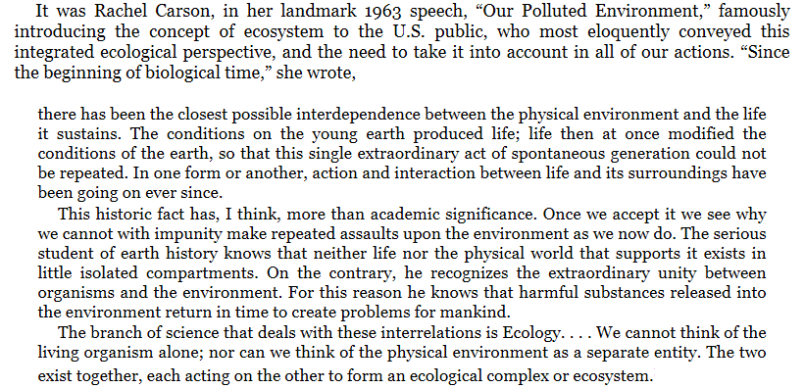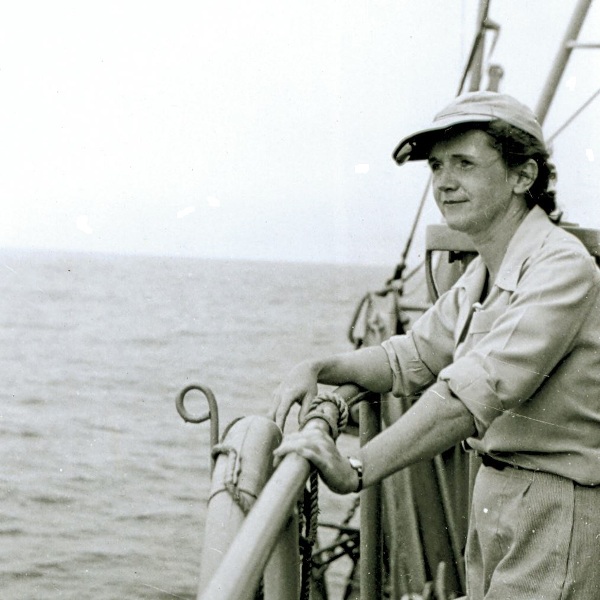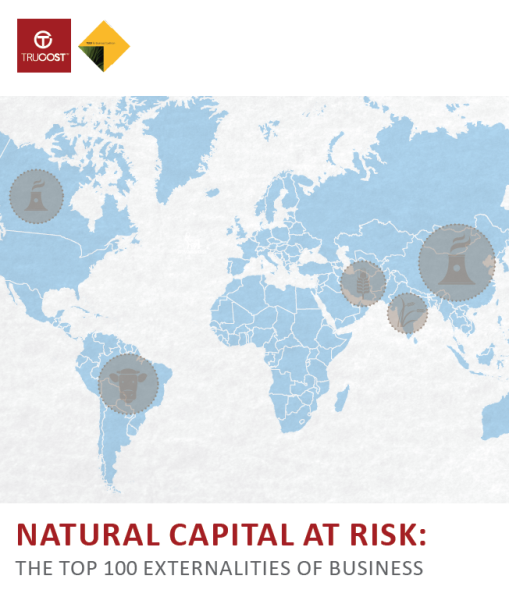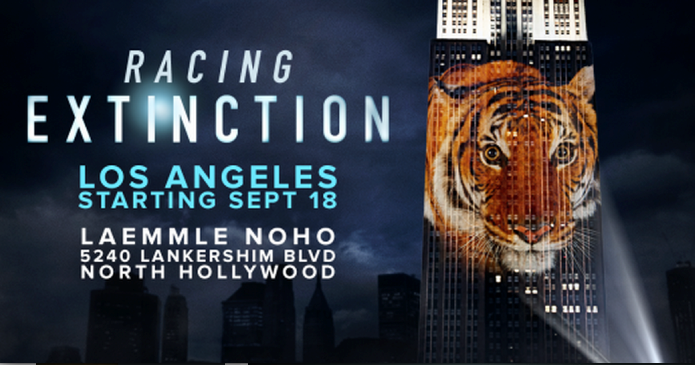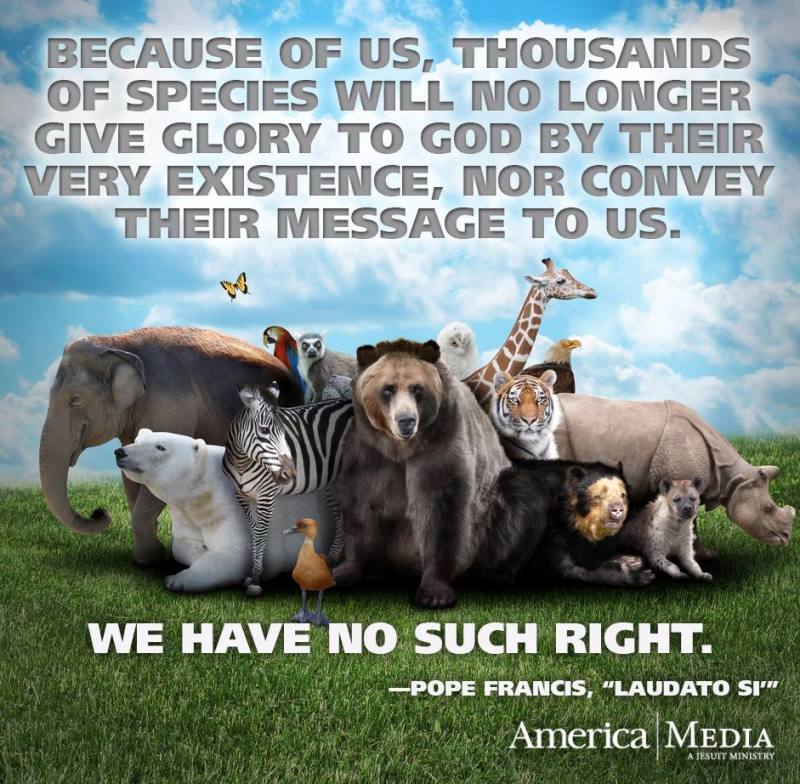Endangered species
The Red List / International Union for Conservation of Nature
● http://www.iucnredlist.org/current-news
● http://www.iucnredlist.org/about/overview
● https://en.wikipedia.org/wiki/Endangered_species
The Threat Environment
The End of Nature, by Bill McKibben, is one of the first looks at the new reality, where one no longer can stand on top of a mountain and 'feel' unallayed nature at work. In the new world the natural order has be impacted, changed, shaped by humans upwind and upriver, in ways too numerous to know, and so the wind blows from distant cities now, with distant forces at work, atmospherically, above, and hydrologically below and nearby. The physics of change are real and humans are an integer and ecological integral in this active new world order.
The world is alive and is changing with dynamic, fluid elements moving around, through and with the human species, homo sapiens, in ways nature has never moved before. Look and see the impacts of humanity on nature, on natural systems, on species, on life itself.
Welcome to the Anthropocene.
You are the new world order.
○ ○ ○ ○ ○ ○ ○ ○ ○
The 6th
The 6th Extinction
Elizabeth Kolbert is the author of the new book The Sixth Extinction. It begins with a history of the "big five" extinctions of the past, and goes on to explain how human behavior is creating a sixth one — including our use of fossil fuels and the effects of climate change.
○ ○ ○ ○ ○ ○ ○ ○ ○ ○ ○ ○ ○ ○ ○ ○ ○ ○ ○ ○ ○ ○ ○ ○
Naomi Klein, "This Changes Everything" Naomi Klein speaks at the Bioneers Conference
NY Times..."the most momentous and contentious environmental book since 'Silent Spring.'"
- Mass extinctions and ocean acidification
http://link.springer.com/article/10.1007/s00338-008-0381-8#page-1
Primary causes of mass extinctions are linked in various ways to the carbon cycle in general and ocean chemistry in particular with clear association with atmospheric carbon dioxide levels.
The prospect of ocean acidification is potentially the most serious of all predicted outcomes of anthropogenic carbon dioxide increase.
Acidification has the potential to trigger a sixth mass extinction event and to do so independently of anthropogenic extinctions that are currently taking place.
○
"Human beings are now carrying out a large scale geophysical experiment of a kind that could not have happened in the past nor be reproduced in the future."
http://www.aip.org/history/climate/Revelle.htm
http://bit.ly/oceans_acidification
Natural Capital & Externalities
-- http://en.wikipedia.org/wiki/Externality
-- https://www.greenpolicy360.net/w/Category:Externalities
Grist -- grist for thought... (2013) -- The notion of “externalities” has become familiar in environmental circles. It refers to costs imposed by businesses that are not paid for by those businesses. For instance, industrial processes can put pollutants in the air that increase public health costs, but the public, not the polluting businesses, picks up the tab. In this way, businesses privatize profits and publicize costs.
If we take the idea seriously, not just as an accounting phenomenon but as a deep description of current human practices, its implications are positively revolutionary.
[Begin by reviewing] a Natural Capital & Externalities Report conducted by environmental consultancy Trucost on behalf of The Economics of Ecosystems and Biodiversity (TEEB) program sponsored by United Nations Environmental Program. TEEB asked Trucost to tally up the total “unpriced natural capital” consumed by the world’s top industrial sectors. (“Natural capital” refers to ecological materials and services like, say, clean water or a stable atmosphere; “unpriced” means that businesses don’t pay to consume them.)
It’s a huge task; obviously, doing it required a specific methodology that built in a series of assumptions. (Plenty of details in the report.) But it serves as an important signpost pointing the way to the truth about externalities.
Here’s how those costs break down:
The majority of unpriced natural capital costs are from greenhouse gas emissions (38%), followed by water use (25%), land use (24%), air pollution (7%), land and water pollution (5%), and waste (1%).
So how much is that costing us? Trucost’s headline results are fairly stunning.
§
First, the total unpriced natural capital consumed by the more than 1,000 “global primary production and primary processing region-sectors” amounts to $7.3 trillion a year — 13 percent of 2009 global GDP.
Second... Surprising no one, coal is the enemy of the human race. Trucost compiled rankings, both of the top environmental impacts and of the top industrial culprits.
The biggest single environmental cost? Greenhouse gases from coal burning in China. The fifth biggest? Greenhouse gases from coal burning in North America.
Trucost’s third big finding is the coup de grace. Of the top 20 region-sectors ranked by environmental impacts, none would be profitable if environmental costs were fully integrated. Ponder that for a moment: None of the world’s top industrial sectors would be profitable if they were paying their full freight. Zero.
Global industries and environmental damage: The damages, the externalities are massive
Coal power generation alone in Eastern Asia, which generates revenues of $443.1bn, has a natural capital cost of $452.8bn (that's unpriced natural capital – the report already takes into account the various ways in which industries are forced to price in their externalities), largely due to greenhouse gases. Cattle ranching in South America, with revenues of $16.6bn, has capital cost of $353.8bn, due to the unpriced cost of land use. And so on.
You can quibble the figures – and doubtless many will – but what is clear is they are large. Really, really large. Many of the biggest industries in the world can only exist because they don't have to pay the true environmental cost of what they do. The word "unsustainable" is thrown around too much these days, but it seems to fit here.
Natural Capital at Risk: The Top 100 Externalities of Business
http://www.greenpolicy360.net/w/Category:TEEB
The First Catholic Pontiff Named after the Patron Saint of the Environment
- The First Eco-Encyclical Sets Forth an Environmental Message of Care for 'Our Home'
● https://www.greenpolicy360.net/w/File:Laudato_Si_On_Care_for_Our_Common_Home.png
Pope Francis says destroying the environment is a sin
Thursday 1 September 2016
Pope Francis has called for urgent action to stop climate change and proposed that caring for the environment be added to traditional Christian works of mercy such as feeding the hungry and visiting the sick.
In a message to mark the Catholic church’s World Day of Prayer for the Care of Creation that he launched last year, Francis said the worst impact of global warming was being felt by those who were least responsible for it – refugees and the poor.
The pontiff used the occasion to revive many of the powerful issues he highlighted a year ago in his provocative encyclical on the environment, Laudato si’, and his latest message seems certain to rankle conservatives.
Francis described man’s destruction of the environment as a sin and accused mankind of turning the planet into a “polluted wasteland full of debris, desolation and filth”.
“Global warming continues,” the pope said. “2015 was the warmest year on record, and 2016 will likely be warmer still. This is leading to ever more severe droughts, floods, fires and extreme weather events.
“Climate change is also contributing to the heart-rending refugee crisis. The world’s poor, though least responsible for climate change, are most vulnerable and already suffering its impact. ”
The pope said the faithful should use the Holy Year of Mercy throughout 2016 to ask forgiveness for sins committed against the environment and our “selfish” system motivated by “profit at any price”.
“We must not be indifferent or resigned to the loss of biodiversity and the destruction of ecosystems, often caused by our irresponsible and selfish behaviour,” he said. “Because of us, thousands of species will no longer give glory to God by their very existence … We have no such right.”
● http://www.greenpolicy360.net/w/Pope_Francis_on_the_Environment
Racing Extinction
“I told the crew, 'We’re not making a movie – we’re starting a movement'. This film is one component of a movement that will go on and on...
and hopefully live in people’s hearts and minds and change behavior. We are the only generation that can save species for millions of years going forward...”
○


